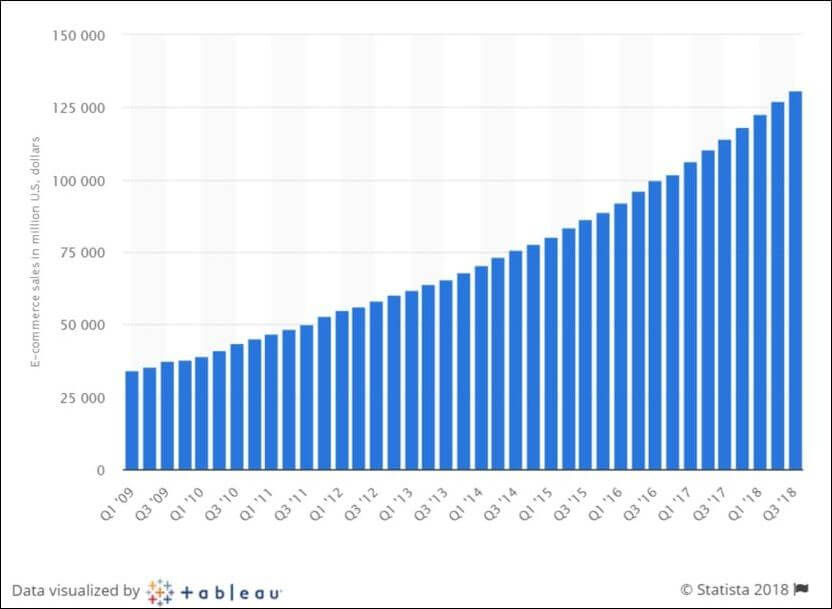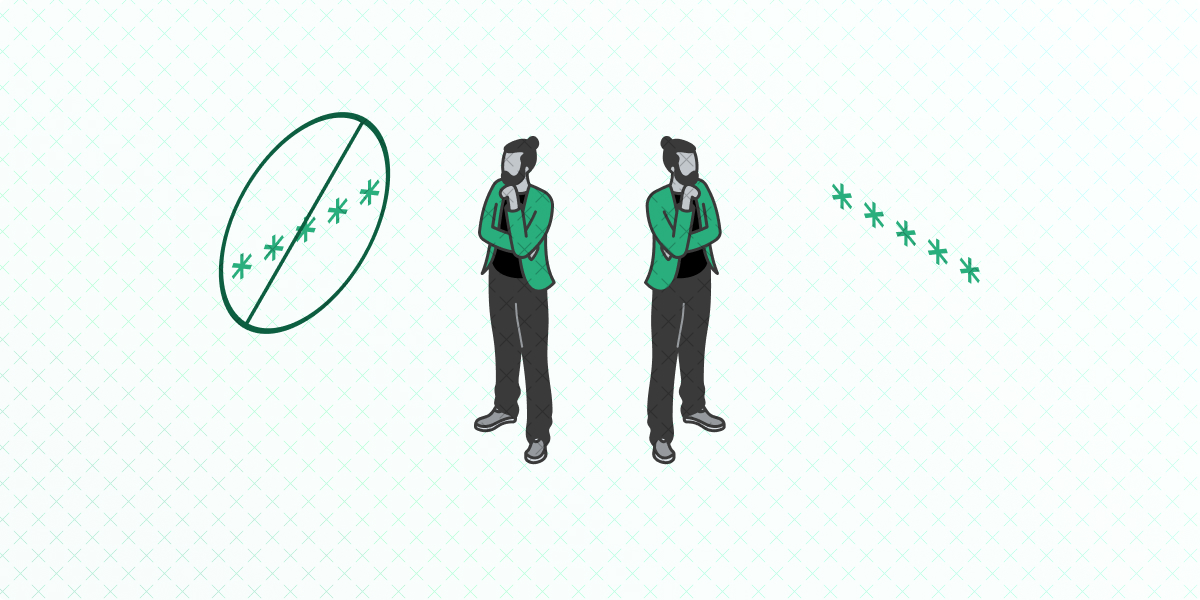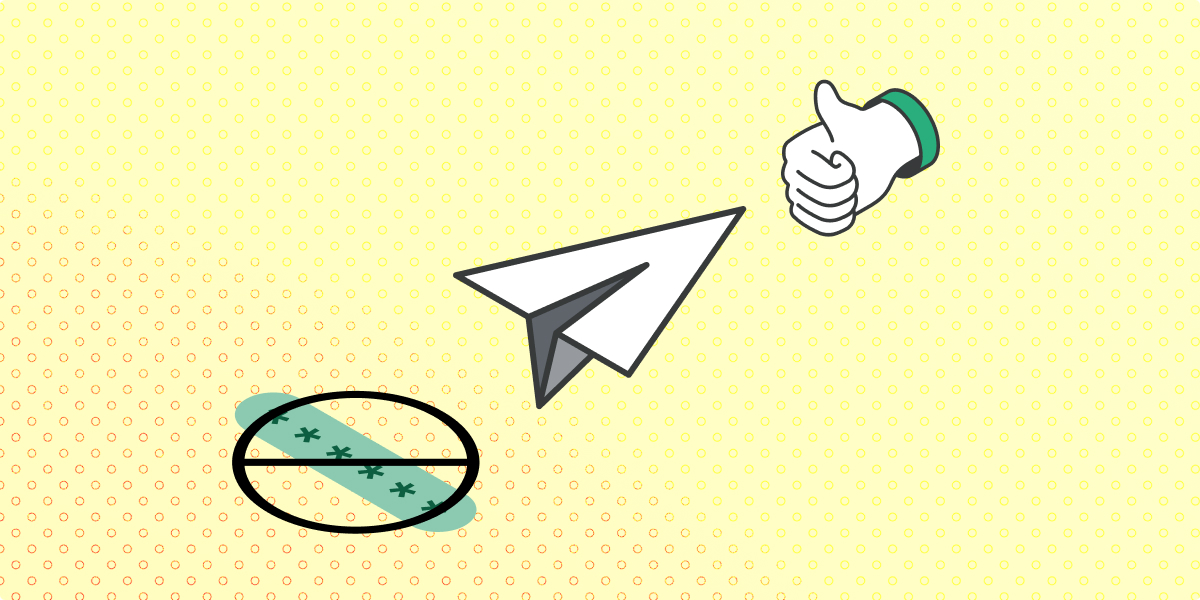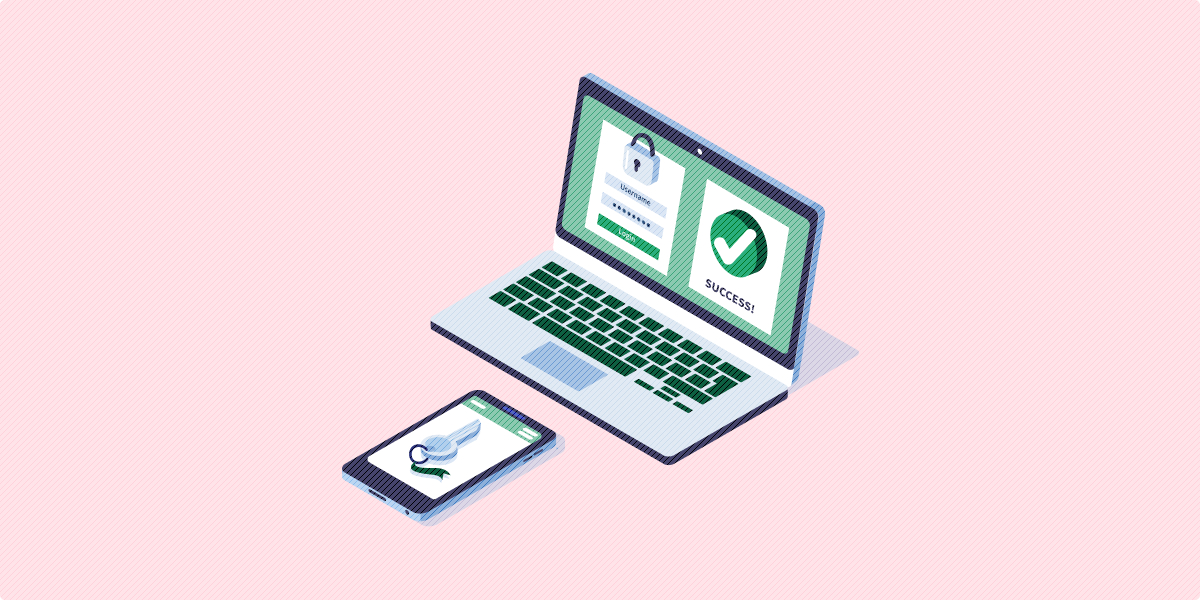Customer acquisition has always been an essential element of business success, but the explosion of small business enabled by the rise of eCommerce has made it more important for more entrepreneurs than ever before.
Online business and retail have completely changed how consumers think about making purchases, researching options, and returning to trusty brands. Elements of the user experience that we’ve previously taken for granted have become immensely important in determining how a potential customer engages with an online business.
For instance, in one case study about eliminating password-based login from online transactions, 86,000 of 100,000 customers chose to set up an account and store their payment information when the login process was simplified and secured in new ways. For reference, the internet average for this kind of customer acquisition hovers between 5,000 and 12,00, depending on the industry.
As an entrepreneur, you already know what you’re up against. In many ways, the internet has made it incredibly easy to get started with your own online small business, but our networked world has also made it harder than ever to secure a foothold with customers and audiences. Plus, competition will only continue to increase as retail eCommerce sales have been growing steadily for years:
According to this data from Statista, eCommerce sales in the US topped $130 billion in the third quarter of 2018, up from less than $35 billion less than 10 years ago. That kind of growth is driven in large part by customer acquisition, but reaching and converting new customers can feel like an uphill battle for many entrepreneurs.
If you’ve got questions about digital customer acquisition, look no further. We’ll walk through the ins and outs of developing a new customer acquisition strategy for your eCommerce business, and we’ll point out some new techniques to incorporate into your digital arsenal, as well. If you have a specific question, use the navigation below to jump right to that section:
- What is healthy customer acquisition?
- What is the customer acquisition process for eCommerce?
- What are some common acquisition roadblocks?
- How do you increase customer acquisition?
- How can you boost customer retention for eCommerce?
Customer acquisition, the conversion process, and retention-boosting strategies can all be tricky topics to master on their own. Don’t let the digital nature of eCommerce make these concepts any more challenging than they need to be! Let’s get started:
1. What does healthy customer acquisition look like?
A healthy and sustainable rate of customer acquisition will look different for every business. The nature of your eCommerce business, the size of your market, and your target audience’s online habits will all generally influence how quickly you attract and convert new customers.
To get an idea of what an ideal rate of customer acquisition might be for your business, begin by determining some benchmark metrics. Your current and average rates of customer acquisition are good places to start. Determine how many new customers you converted during the past quarter, and then look across the previous year. Try to calculate the rate for each quarter you’ve been in business. These data points can give you a rough idea of how you’re performing in terms of acquiring new online customers.
- If your rate of customer acquisition has remained steady over several quarters, focus on growing it.
- If your acquisition has fallen, it’s time to rethink and refresh your strategies.
- If your acquisition has risen, identify the strategies that fueled its rise and continue to refine them.
If your eCommerce business is suffering from low or declining customer acquisition, you’re almost certainly already aware of it. However, it’s important to have realistic expectations and set achievable goals whenever you work to develop new acquisition strategies. Before setting out on improving your rate, review the state of your business and the space it occupies in the market. Here are two useful questions to consider:
- How often do people use or need my product? A grocery store’s rate of customer acquisition will be much higher than a luxury car dealership’s, even though both of them might be healthy. Think carefully about your market, audience, and the value you provide them to avoid setting unrealistic goals that are out-of-line with the nature of your business.
- How competitive is my space? The number of other eCommerce players fighting for your prospect’s attention will directly impact your rate of customer acquisition. The number of small online businesses today is staggering, so recognizing the scope of your competition is essential for determining achievable but ambitious goals for your acquisition strategies.
Generally speaking, a healthy rate of customer acquisition will enable an eCommerce business to grow its revenue. At the very least, this means replacing lapsed or one-time customers quarter over quarter. Every business will have its own ideal rate of acquisition, but growing your customer base is the overall goal.
Low customer acquisition is costly for online businesses.
Having a stagnant or declining rate of customer acquisition can seriously hurt your business in both the short- and long-term. In the short-term, failing to convert new customers directly affects your revenue, but fighting a prolonged uphill battle to reach and acquire new customers can cost you even more over time.
Use your business’s cost of customer acquisition, or CAC, to determine how much money you spend on attracting new customers:

Divide your total marketing expenses over a set period (including wages, software, overhead, and any other costs) by the number of new customers you converted over that same period. Calculate your cost of customer acquisition for past years or quarters, then see if any patterns emerge. Many small businesses are shocked to learn how much they spend per customer, especially when their rates of customer acquisition are already too low for comfort.
This shouldn’t be surprising, though. According to ProfitWell, the cost of customer acquisition has been steadily rising for both B2C and B2B companies, increasing by almost 50% over 5 years.
The internet has powered a small business renaissance in our economy, but the rise of eCommerce has also drastically increased competition and flooded consumers with digital marketing content. With more players on the field, it takes much larger investments of time and money to catch the attention of new customers. Plus, online consumer attitudes can be particularly volatile in reaction to high-profile data breaches and other ongoing sociopolitical events.
HubSpot’s 2018 research reflects these trends and highlights the increasing difficulty of converting online consumers:
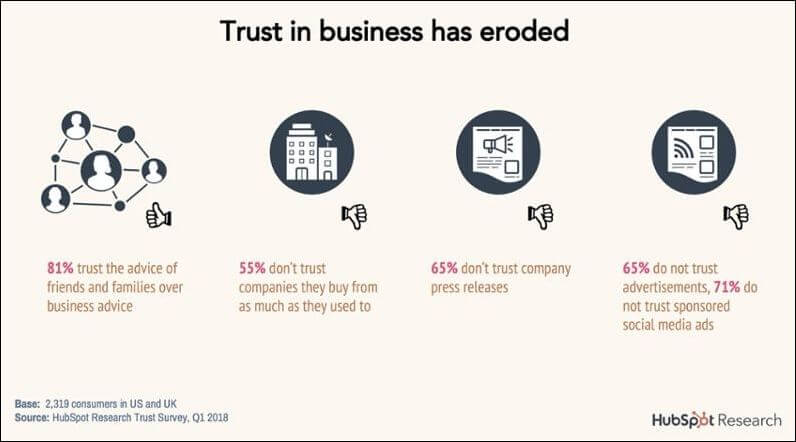
Healthy customer acquisition depends on healthy customer retention.
These shifting consumer attitudes and trends reaffirm what savvy online businesses have always known: strong retention is the best customer acquisition strategy.
Referrals from family and peers are increasingly important sources of prospective customers, and they go a long way to increase your visibility and brand awareness. Growing your relationships with existing customers is the best way to reach wider audiences, and it can significantly reduce your cost of customer acquisition by reducing your need to continually attract new prospects.
We’ll walk through a few retention-boosting strategies below, but for now, keep in mind that your eCommerce business’s customer acquisition and customer retention strategies should be closely aligned.
Say Goodbye to Passwords
and
Hello to Secure Logins.
Go passwordless and delight your users with secure and seamless one-click login.
2. What is the customer acquisition process for eCommerce?
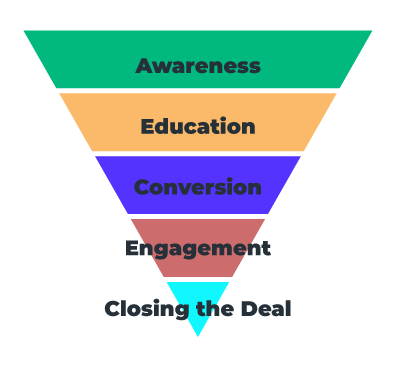
As an online entrepreneur, you’re already familiar with the sales or conversions funnel.
This method of visualizing the buyer’s journey follows them through the process of first becoming aware of your business through general online searches or your social media marketing.
Next, the consumer learns more about your product or service through informational online content like blog posts. This content then typically directs them to a landing page that includes a lead capture form.
Once you receive their contact information, you can begin to directly engage them as a prospective customer, usually via email. Special deals and exciting calls-to-action then close the deal and fully convert your prospect into a new customer. The sales funnel is an extremely useful way to understand how your digital marketing efforts should work together, but it can’t show you the whole picture when it comes to acquisition.
Customer acquisition for eCommerce has many moving parts, and conversions are just one of them.
The full customer acquisition process involves the interaction of your sales funnel, your digital marketing strategies, and the customer lifecycle in more complex ways. The entire process also begins earlier (in terms of brand awareness or peer referrals) and extends long after (continued engagement and cultivation) the classic funnel conception of sales.
The “customer lifecycle” refers to how your customers experience your business before, during, and after making a purchase. Here’s roughly how they all fit together:
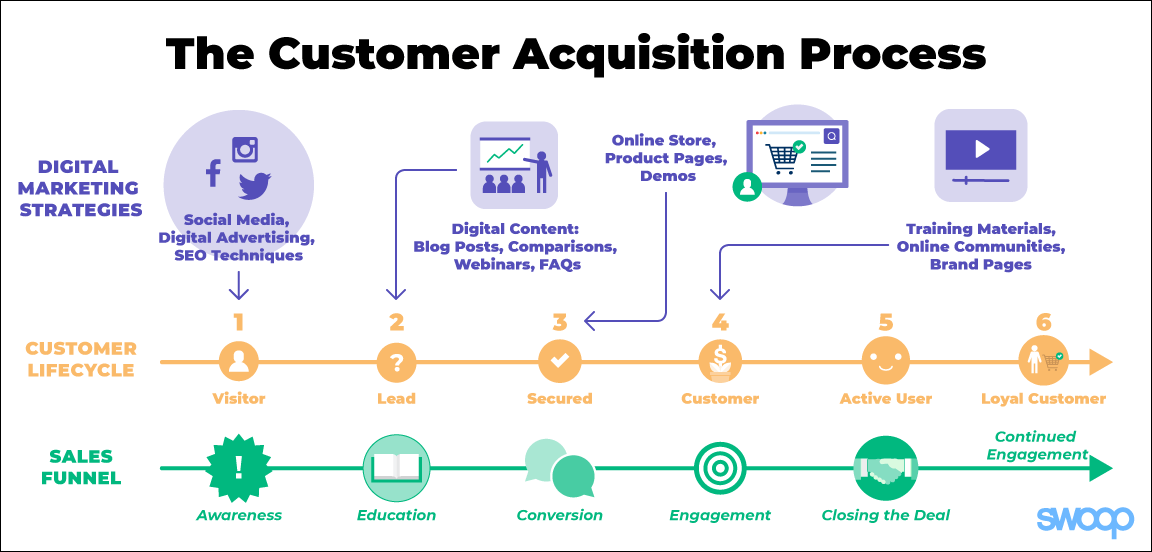
Let’s walk through the steps in this diagram:
- In Stage 1 of the customer lifecycle, a new prospect visits your website for the first time. Your social media, email, or other digital advertising efforts might have drawn them to your store, or a referral from a peer made them curious about what you offer. Your website’s educational content, including industry research, blog posts, and other articles help to raise their awareness of your products or services.
- In Stage 2, the prospect has expressed their interest. Your website’s content, special deals in your store, or other lead capture techniques secured the prospect’s contact information. More informational content, product comparisons, and case studies are useful types of digital marketing materials for both capturing leads and keeping prospects interested.
- In Stage 3, your prospective customer has been ‘activated’. This means you’re directly engaging them with your products or services. For retail eCommerce, this might mean they’ve visited your product pages and begun putting items into their shopping cart. For online B2B companies, this stage usually involves demonstrations and proposals.
- In Stage 4, you successfully convert your prospect into a customer. They’ve paid for your services or products, and you’ve started processing their order. More online content like FAQs and blog posts are can keep eCommerce customers engaged at this point, and this is when SaaS companies should begin the training and support process.
- In Stage 5, your active customers use your product or services. For B2C eCommerce, this stage involves asking customers for reviews and for continued engagement with your digital content. For B2B, this stage might involve fully onboarding new customers, setting up the product, and beginning training via manuals, workshops, and personal customer service.
- In Stage 6, your loyal customers renew their support of your business. They might either purchase from you again or upgrade their existing purchases. It’s important to keep track of digital engagement metrics, renewal rates, and churn rates in order to focus your efforts more efficiently. Try to track the amount of referral business that you receive whenever possible, as well.
Of course, this process will vary slightly depending on the nuances of your business model and your online audience, but the main idea is that the sales process, digital marketing, and the customer lifecycle are all connected. They should work together to provide a positive experience at every step.
Generating conversions is an essential part of the customer acquisition process, but it differs from the classic sales funnel structure in an important way. Your customer acquisition strategy should take the pre-sale and post-sale experience of your customers into account, not just the sale itself. Fully understanding the acquisition process and building a comprehensive strategy around it works for eCommerce companies of all sizes because it can boost both conversions and retention.
3. What are common roadblocks to new customers acquisition in eCommerce?
There are a number of challenges that can prevent your eCommerce business from reaching or maintaining the rate of customer acquisition you’d like to see. While some of these might be out of your control, there are plenty of others that you can either directly or indirectly address by refining your strategies and staying on top of your digital techniques. Let’s walk through a few of the most common issues that online entrepreneurs face in attracting new customers:
Heightened Competition
We’ve already touched on how competitive the eCommerce world can be. An extremely wide range of vendors and an endless supply of digital marketing and educational content have made it harder than ever to stand out and attract new customers.
The level of direct competition you face will, of course, depend on the nature of your business; an online clothing store, for instance, has thousands of direct competitors and will need to differentiate itself through smarter marketing and branding.
Competition is a core challenge for any business, but particularly for eCommerce businesses looking to target audiences in sectors that are already saturated with other online stores.
Stay on top of new developments in your field and any newcomers to your space. Understanding what differentiates your competitors (particularly they’re outperforming you) is the first step to boosting your acquisition rates.
Low Awareness or Visibility
Even when your eCommerce store doesn’t face a large number of direct competitors, low visibility or awareness among your target audience can be a major limiting factor on your rate of customer acquisition.
For instance, an artist who sells their work online might not have any direct competitors, but there are tons of other artists online fighting for visibility, too. Finding the right online spaces, audiences, and techniques to spread the visibility of their work is the main challenge.
Even with superior products, excellent service, and great web design, an eCommerce business can struggle to attract new customers simply because the internet is such a massive marketplace.
This is another reason why retention should be prioritized just as much as your customer acquisition strategies. Earning the repeat business of a customer on today’s internet is a huge achievement! Study your victories and work hard to express your gratitude to return customers whenever possible.
Consumer Attitudes
As online consumers, we’ve gotten used to hearing about new data breaches, online privacy scandals, and blatant abuses of public trust by online companies and tech giants. eCommerce is more important to the global economy than ever before, but concerns about digital safety also continue to grow.
The vast majority of online business people run their own small eCommerce stores and have no interest in abusing the data and privacy of their customers. However, many online consumers are automatically wary of online vendors that they don’t recognize.
Using a digital payment processing service that they’ve never seen before, for example, will often immediately send up red flags.
Poor web design that looks outdated often reads as suspicious to savvy users, as do obtrusive pop-ups or irrelevant links or content on your site. Streamlined and intuitive design plus straightforward security are the keys.
Sticker Shock
If your eCommerce store sees a fair amount of traffic but very few actual conversions or completed transactions, sticker shock might be to blame. This occurs when prospective customers are interested in your products and might even initiate a purchase. Once they see the total price, however, they then abandon their cart and leave your acquisition rate suffering. We’ve written before on the causes of shopping cart abandonment, and sticker shock is a major contributor to this common problem.
Sticker shock can seriously affect your rate of customer acquisition when left unaddressed.
High shipping prices and limited options are the typical culprits, as well as more generally misunderstanding your audience and market.
A huge proportion of the purchases made online at B2C businesses are fairly impulsive; eCommerce stores that slow down the buying process with shocking prices are actively harming their own rates of acquisition.
Poor User Experience
Just like sticker shock, poor user experience on your eCommerce storefront or company’s website can seriously impact your customer acquisition. Online consumers have immense freedom of choice today, and a poorly-performing, disorganized, fishy, or unattractive website won’t get their attention.
Providing a well-designed user experience across the entire customer lifecycle is essential for eCommerce businesses that need to appeal to new and larger audiences.
After all, it’s difficult to raise the visibility of a website or store that new visitors will have difficulty engaging with or even accessing.
Easy login and account management, easy-to-use navigation, and intuitive payment options are all great characteristics to strive for on your site.
4. How do you increase customer acquisition?
As we’ve explained in the sections above, there’s no one root cause of poor acquisition, and a healthy rate of customer acquisition looks entirely different for every business. As such, there are no hard and fast rules for increasing your customer acquisition. There are, however, a few best practices that tend to work well for a wide variety of eCommerce businesses looking to attract more prospective customers. Let’s walk through a few:
1. Boost your visibility and brand recognition.
Raising awareness of your brand and eCommerce business is always a smart move. In terms of digital marketing, you should be investing in a few core techniques:
- Search engine optimization. Increasing your visibility on the search engines is a crucial way to ensure your business is seen when users search for specific keywords. This marketing technique is often coupled with content marketing.
- Digital content. Producing blog posts, educational articles, webinars, videos, and podcasts are all great ways to engage with (and grow) your audience. Targeting your content to particular keywords or hiding some of your best work behind a lead capture form are easy ways to boost your customer acquisition efforts.
- Social media marketing. Although consumer attitudes are can be volatile when it comes to social media platforms, there’s no denying it’s still the most direct way to engage with a huge audience and serious increase your visibility with both paid and organic or viral techniques.
All three of these digital marketing strategies work well together and even support one another. However, it’s extremely important that you focus just are hard on the value of retention when it comes to boosting your customer acquisition. That is, social proof and referrals from satisfied customers have proven to be among the most effective and efficient ways to raise awareness of your business:
- 81% of consumers trust the advice of friends and family over messages from businesses themselves.
- It is 16 times as costly to build a long-term relationship with a new customer than it is to cultivate the loyalty of an existing one.
Never underestimate the power of strong customer retention and word-of-mouth! As online consumers are flooded with digital marketing content, a recommendation from an actual person is the perfect way for your eCommerce business to stand out.
2. Focus on offering strong customer experience and support.
This best practice also relates to the immense value you can generate by prioritizing customer retention as an acquisition strategy. Providing an extremely positive and streamlined experience can give your eCommerce the boost it needs to generate more social proof and word-of-mouth. When leveraged along with your other digital marketing strategies, these referrals can supercharge your customer acquisition.
There are a few points in the customer lifecycle where you should really focus on the quality of the experience your business offers. Take a look at the diagram below:

- Improving your customers’ experience starts with understanding their goals and intent. During the first stages of the customer lifecycle, think about why prospective customers search for the keywords that you’ve targeted in your blog posts and other content. Someone searching for “kitchen gadget gifts”, for example, probably won’t be as interested in your article about the history of kitchen gadgets as they would be in a direct link to your catalog of cool kitchen tools.
- When it’s time to convert your lead into a paying customer, focus on streamlining the purchase process. We mentioned the issues of sticker shock and poor user experience in the previous section, and here’s the point in the process where you should be actively combating them. Create a streamlined user experience with easy and secure login tools, intuitive shipping options, and free perks or rewards programs.
- Once you’ve secured a purchase from a new customer and established a relationship with them, don’t be afraid to actively encourage further engagement with your brand. Survey your customers to see how likely they’d be to recommend your products to a friend, or develop social media strategies specifically for engaging existing customers. Ask loyal customers for testimonials, or consider starting a loyalty program to thank referrers for their support.
3. Provide incentives and exclusivity with your marketing techniques.
Unique strategies that incentivize engagement are a great way to boost retention and customer acquisition through raising brand awareness. Gated content is a classic and widely-used example. Exclusive blog posts, interviews, and case studies are an effective way to capture new leads for your marketing efforts, but consider tapping into the power of third-party content partners, as well.
The relationship between podcasting and eCommerce is the perfect example of the kind of synergy possible in this digital era. Online businesses will sponsor popular podcasts whose audiences overlap with their own. For instance, the millennial young professionals who love listening to true crime and other narrative podcasts would likely be interested in exploring your website-building service that caters to creative entrepreneurs. Create a unique discount code just for those listeners to get started with your services.
By tapping into a pre-existing audience that contains your target demographics and then offering exclusive offers or perks, you can encourage that audience to feel a stronger sense of alignment with your brand. This feeling is a powerful way to raise awareness of your brand and begin building a relationship with prospective customers before they even visit your website.

1-Click Login is a simple & secure password-free authentication service.
With our patented technology, your website can improve security & increase customer conversion by removing passwords.
5. What can help increase customer retention in eCommerce?
All throughout this guide, we’ve touched on the importance of customer retention. It’s one of the most powerful drivers of customer acquisition because it strengthens relationships with your audience and fosters more organic referrals.
Prioritize measuring and tracking your customer retention rates. You’ll need a concrete starting point in order to set actionable and achievable goals over the long-term. While there is any number of strategies out there for boosting your retention rate, it’s important to keep the root causes of customer churn and drop-off in mind; security concerns and poor user experience are two of the largest culprits today.
There are a few stand-by retention-boosting techniques that you can begin implementing today. Let’s walk through a few that directly address security and UX issues:
1. Use single sign-on tools to boost trust and improve UX.
Nothing will cause a customer to abandon their shopping cart on your store faster than unnecessarily forcing them to create a new account. As online consumers, we already make, use, and remember so many passwords online that we actually tend to create weaker ones simply for the sake of convenience. It’s much easier to remember “ABCD1234!” than it is to think carefully about creating one that’s actually secure. Password manager tools are helpful for generating and recording passwords, but they don’t address the core problem of hassling your customer mid-transaction with account creation.
Innovative single sign-on email authentication tools like Swoop circumvent the problem entirely by tapping into a more streamlined and secure process that doesn’t require passwords at all. Eliminating that first major roadblock to building a relationship with new customers is one of the smartest ways to both encourage them to complete their initial purchase and continue engaging with your business in the future.
As an eCommerce entrepreneur, it’s your responsibility to safely guard your customers’ sensitive login data that oftentimes grants direct access to payment information. It’s possible to significantly streamline the login process without compromising on security. For instance, Swoop uses state-of-the-art 2048-bit encryption techniques to safely scramble and then reassemble your customers’ login data, resulting in a seamless, airtight login process.
With a single sign-on solution, the process becomes even simpler for your customers. Tools like Swoop can be used and trusted across brands. It’s incredibly easy to get started, too. If you operate your eCommerce business through a WordPress site, for instance, a quick plugin can implement Swoop’s authentication tool in minutes.
2. Focus on friction reduction more generally.
Improving the user experience of your site will naturally boost customer retention. That’s simply because it’s a hassle to use any website that isn’t optimized to work smoothly or that doesn’t include intuitive features that users actually need.
Again, it’s important to remember that a huge proportion of eCommerce sales are somewhat impulsive in nature. Companies that recognize when their customers want a quick experience that doesn’t cause them to pause and rethink their purchase can see huge boosts in retention. Just look at the currently reigning eCommerce giant, Amazon. It’s incredibly easy to get started on Amazon and then quickly make more purchases down the line.
Think about your own customers’ intent as they visit your store and any friction they might encounter on the way to completing a purchase quickly. Consider these common methods for eCommerce businesses to reduce friction along the customer lifecycle:
- Minimize the negative impacts of account creation and login by using smarter tools, like passwordless single sign-on. Offering a guest checkout option can be a smart way to ensure a one-time customer remembers how easy it was to use your store, as well.
- Make sure your entire website and online catalog are mobile optimized. How many times have you abandoned what would have been an impulse purchase because the store’s product pages loaded slowly or their catalog wouldn’t scroll properly on your smartphone?
- Display a transaction progress bar. Many customers abandon their purchases halfway through simply because they think the data input process is taking too long. Creating a bar at the top of the screen that displays the shipping, address input, billing, and confirmation steps goes a long way to keep them engaged until the end.
- Clearly explain shipping costs and options to customers. We’ve already mentioned how shipping costs are a top cause of sticker shock. Taking the time to clearly communicate shipping options, speeds, and prices can help. Consider offering free shipping promotions, too.
By putting yourself in your customer’s shoes and walking through the transaction process, you should be able to identify friction points fairly easily. Think about your own experiences as an online consumer. What online stores do you regularly purchase from? What features make it easy to engage with them, and how can you similarly improve the user experience on your own eCommerce website?
3. Try re-targeting marketing strategies.
Retargeting is a smart way to ensure your business stays fresh in the minds of both existing customers and one-time visitors to your website. It directly combats the issue of shopping cart abandonment by actually reminding visitors about your eCommerce products or services where they’re most likely to see it, right on Facebook or Google. Although are a number of different technical processes for retargeting former visitors to your store, the basic process is fairly simple. Here’s how it works:
- A potential customer visits your online store.
- Whatever technical retargeting process you use then tags their IP address. Most commonly this involves creating a token in their web browser, like a cookie.
- The potential customer browses your catalog or even begins filling a shopping cart, but they exist without completing a transaction.
- Later they surf the web and are presented with a visual or text advertisement for your online store.
- The reminder is often enough to spur a second visit and further engagement that can be guided to a completed purchase.
Additionally, remarketing is a similar concept that’s often more accessible for many small online businesses. If you use lead capture techniques at any point in your customer acquisition process, you can automate email campaigns to keep those potential customers in the loop about your promotions and deals. You can even remind customers that they have items waiting in their abandoned shopping carts.
“Retargeting” and “remarketing” are often used interchangeably. These concepts share the same basic idea: reminding current, past, and potential customers about your eCommerce business.
On average, conversion rates increase along with ad impressions, meaning the more times a potential customer is exposed to your image, the more likely they are to actually engage with your brand in a valuable way. This basic concept underpins practically all of marketing, but retargeting and remarketing strategies have proven especially useful for boosting customer acquisition and retention because it directly engages where they are and keeps your work relevant to them.
4. Explore recurring revenue business models and options.
You’ve probably noticed the latest huge trend in eCommerce: recurring revenue business models and subscription-style options. Businesses ranging from personal care products to entertainment merchandise to fresh produce to themed boxes of curated goods have found massive success by offering their customers recurring shipment options.
What better way to reduce friction and completely streamline the buying process than by letting your customers set it and forget it? There are a few significant benefits to offering recurring options to your customers:
- Encouraging customers to set up recurring purchases and shipments very directly improves your retention rate and grows revenue.
- Recurring options simplify the customer’s experience, improving the user experience over the course of your entire relationship with them.
- Those improvements to user experience help to bolster your donor retention rates over the long-run, too.
- Recurring revenue structures also allow you to get creative the range of tiered or customizable plans that you offer, opening up new price ranges and audiences for your goods.
While some businesses aren’t well-suited to this strategy, many others are. Take some time to think about how subscription-style options and recurring revenue structures might fit into your business model. Your ideal strategy might not even need to involve physically shipping goods to subscribers; media personalities and entrepreneurs, like artists, comedians, and podcasters, often create paid subscription plans for their fans to get early access to their digital content. They might even produce exclusive content just for subscribers and supporters.
Take note, however, that recurring revenue structures and subscription options require you to offer customers a way to easily manage their subscriptions online. This means that login, security, design, and user experience are even more important than usual. Nothing turns off potential subscribers to your recurring shipment service faster than the impression that your website will make it difficult to ever unsubscribe!
The Big Takeaway
The internet has completely changed how the world does business. If you run an eCommerce business, you already know how challenging it can be to reach customer acquisition goals while maintaining healthy levels of retention whenever possible. There’s one major point we want to drive home:
Your customer acquisition and customer retention strategies should not be completely independent of one another.
Customer retention is the single best way to boost your customer acquisition efforts. Word-of-mouth has quickly become one of the most important influencing factors in a prospect’s decision to become a customer.
Focusing on the customer lifecycle, improving customer service, and continually refining user experience on your site are the most proactive ways to bolster your retention and acquisition strategies. Your login process, web design, transaction options, and innovative marketing strategies can help take your small online business to the next level.
Looking for more information on eCommerce and technology? Be sure to continue your research with a few additional resources:
- Shopping Cart Abandonment: 10 Ways to Retain Customers. One of the best ways to acquire reliable customers is to practice smart shopping cart abandonment prevention strategies. Check out our guide to learn more about encouraging customers to complete their purchases.
- Payment Processing: The Beginner’s Guide by Double the Donation. Nonprofit organizations hold themselves to some of the strictest security protocols when it comes to online donation processing. Take a note from their strategies and learn more.
- Ultimate Guide to Two-Factor Authentication Solutions. These days, it’s essential to show customers your e-commerce business takes their security seriously. Learn more about two-factor authentication and how your site can keep visitors secure.


